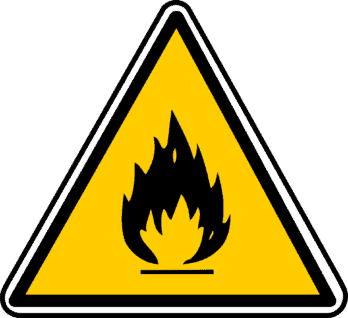Types of GHS Labels for the Workplace

The Global Harmonization Strategy was created by the United Nations in an effort to get countries to work together to have standardized regulations. The abbreviated name is GHS.
Now, as a distributor or importer of any kind of chemical you are obligated to make use of these labels on your products. However, you wonder “What type of labels am I supposed to use?”
This article guides you through the various requirements for GHS labels and outlines the two major types.
Let’s get started.
General Requirements for GHS Labels
Each GHS label must include six elements. This is to maintain consistency and uniformity while providing essential information to employers, workers, and the general public. Here they are:
- The signal word denotes the level of the hazard ranging from warning (at the lower end) and danger (at the higher end)
- Symbols or pictograms are visual illustrations of the kind of hazard the product is susceptible to
- Supplier information includes the contact information, address, and particulars about the manufacturer
- Instructions or precautionary statements can be preventative, response-based, guidelines for storage and advice on disposal
- Hazard statements describe the danger of the product
- Ingredient disclosure or product name outlines various identification details of the product including the chemical ingredients
This information is crucial to preventing hazards and injuries.
1. GHS Labels for Primary Chemical Containers
A primary chemical container is generally used as a carrier to transport chemicals from one place to another. These could be in the form of a cylinder, box, or another large vessel.
These vessels or containers must include a label that addresses all of the six elements mentioned. These labels must be such that they cannot be tampered with or altered.
These labels are used by companies that export raw materials to other manufacturers.
2. GHS Labels for Secondary Chemical Containers
These containers are usually smaller and are often products purchased by the public. These could include spray bottles, jars, smaller boxes, and similar vessels.
These labels must include the six elements specified above.
GHS and Hazard Groups
GHS labels are further classified depending on the hazard groups. The major groups that require GHS labeling include:
- Physical Hazards: A physical hazard is one that is likely to cause explosions, flammability, corrosion, and other physical damage
- Health Hazards: Those that can be acutely toxic, cause skin irritation/ eye damage, are carcinogenic, or cause organ damage through single or repeated exposure
- Environmental Hazards: These can cause damage to the ozone layer or the aquatic environment
Stay Safety Compliant All Year Round
Maintain your reputation as a safe, compliant organization by ensuring your products have accurate and relevant GHS labels.
At Kha Solutions, we help businesses and organizations like yours. Diminish risk, maintain workplace safety and assure regulatory compliance with us. Contact us to learn more about our pricing or browse through our website to see what we can do for you!
